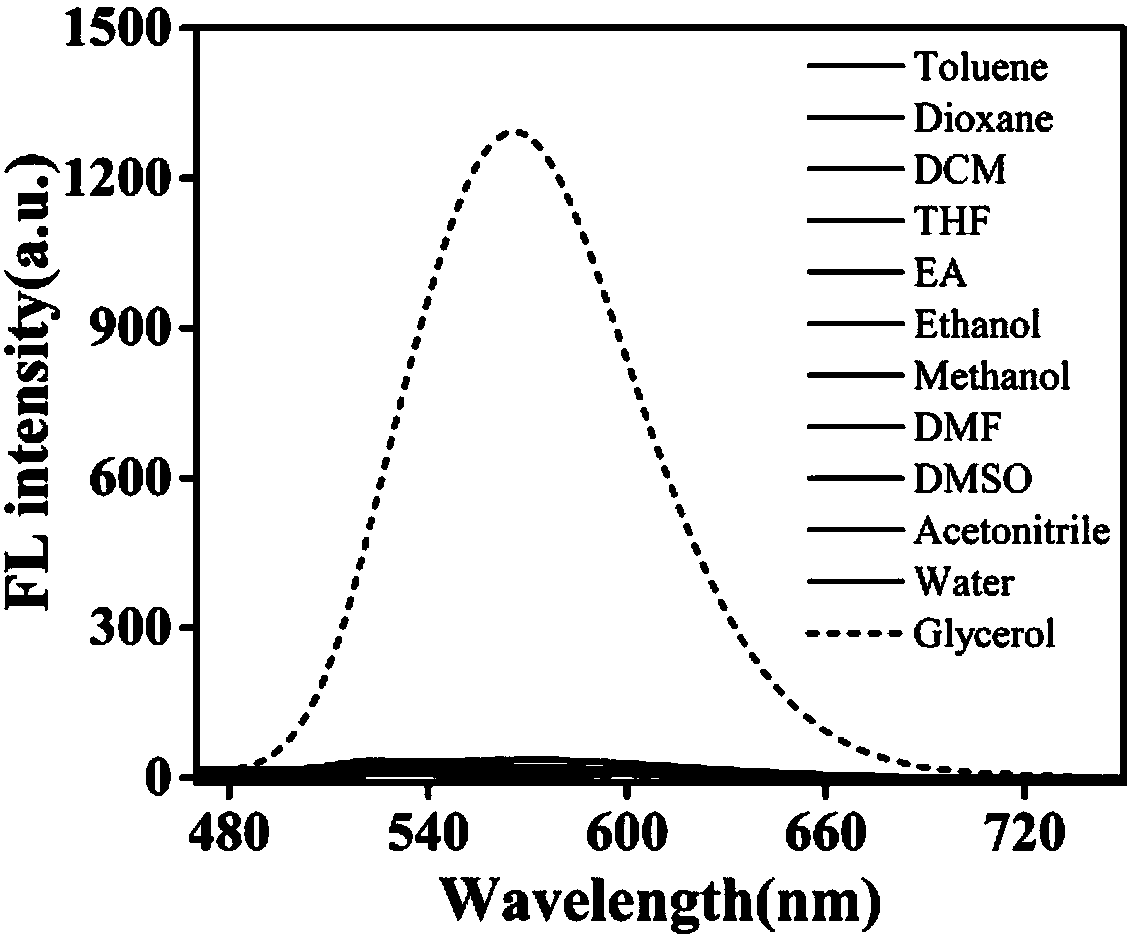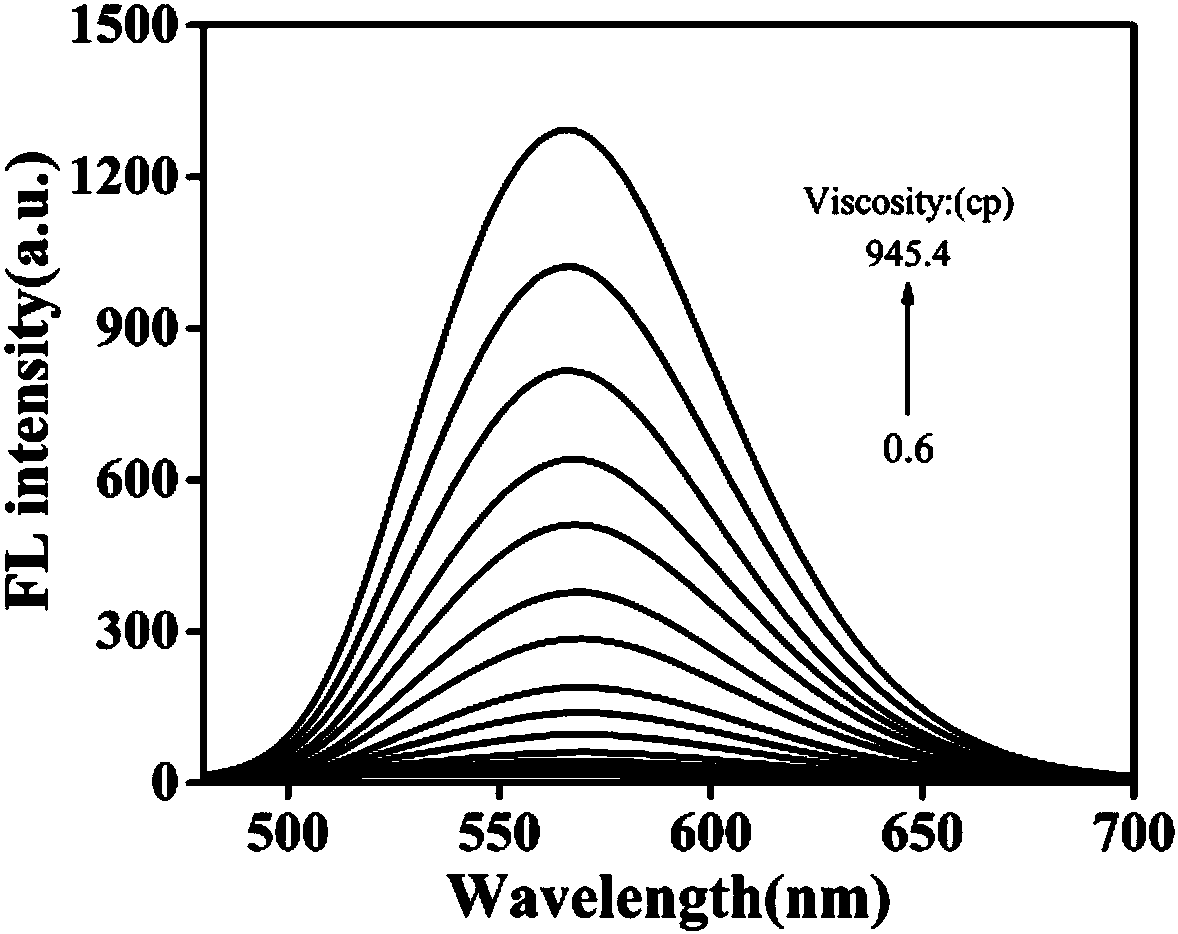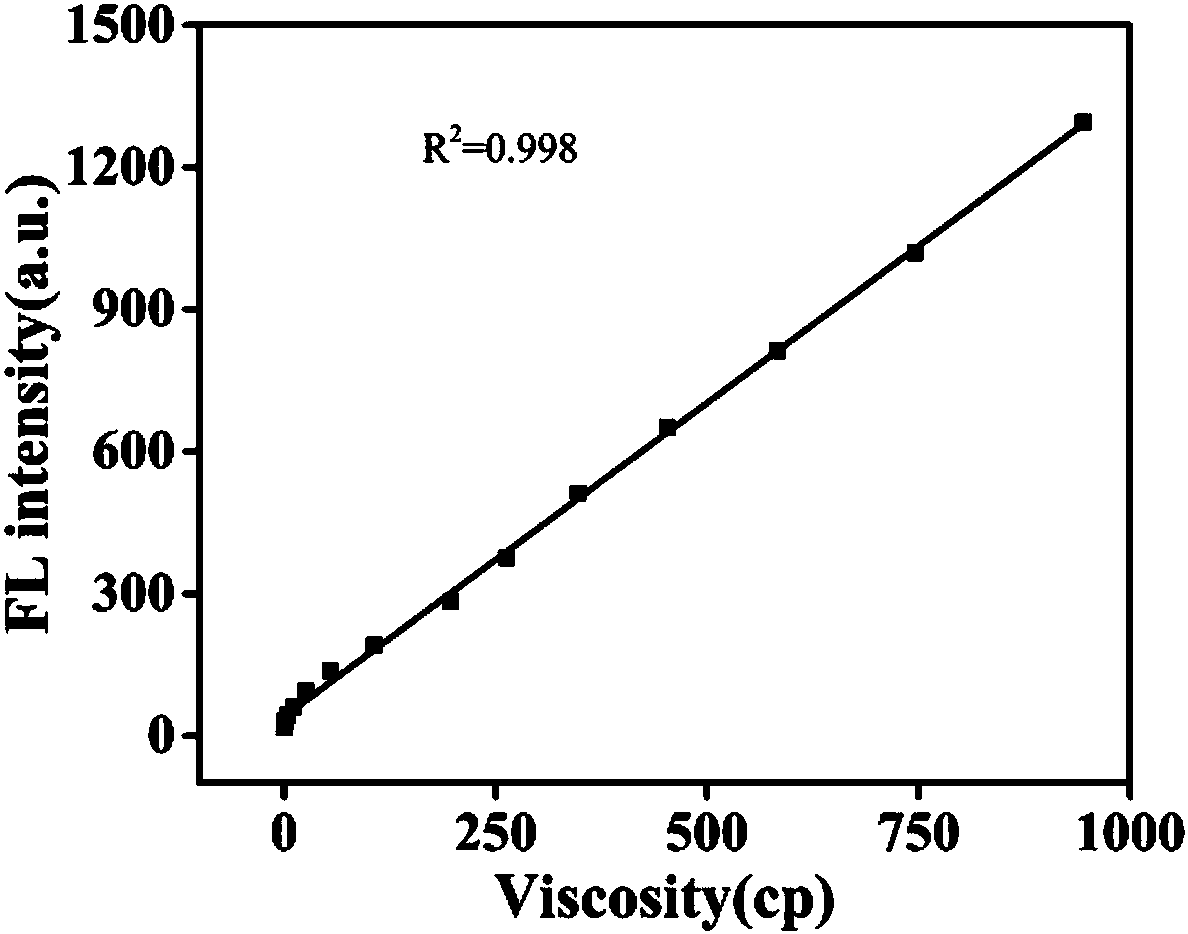Carbazole-based two-photon viscosity fluorescence probe as well as preparation method and application thereof
A fluorescent probe and two-photon technology, applied in fluorescence/phosphorescence, chemical instruments and methods, luminescent materials, etc., to achieve the effects of simple structure, increased permeability, and easy synthesis
- Summary
- Abstract
- Description
- Claims
- Application Information
AI Technical Summary
Problems solved by technology
Method used
Image
Examples
Embodiment 1
[0028] Embodiment 1: the synthesis of intermediate MC
[0029] 3-iodo-6-formyl-N-ethylcarbazole (1.048g, 3mmol), cuprous iodide (0.029g, 0.15mmol), triphenylphosphine palladium dichloride (0.063g, 0.09mmol) Add it into a Schneck bottle, fill and discharge argon three times, then add an appropriate amount of solvent tetrahydrofuran (THF) and triethylamine (6mL) with a syringe, stir for 30 minutes at room temperature, and then inject 4-methoxyphenylacetylene (0.4757 g, 3.6mmol) THF solution, and reacted at 45°C for 1 day. After the reaction was finished, cool to room temperature, and use filter paper to remove excess salt from the reaction solution. The filtrate was placed in a round-bottomed flask, and rotary evaporation removed THF and a small amount of triethylamine. Sample preparation was separated by silica gel column chromatography (elution The liquid is petroleum ether: ethyl acetate=20:1 (v / v)) to obtain 0.6574 g of the target product. Yield 62%. 1 HNMR (400MHz, CDCl ...
Embodiment 2
[0030] Embodiment 2: the synthesis of fluorescent probe molecule MCB
[0031] Add 3-p-methoxyphenylethynyl-6-formyl-N-ethylcarbazole (0.3534g, 1mmol) into a 100mL round bottom flask, add 15mL of ethanol, heat and stir until the raw materials are dissolved, then add 2, 3-Dimethylbenzothiazol-3-ium iodide (0.2911 g, 1 mmol) was added dropwise with 2-3 drops of piperidine, and refluxed at 80° C. overnight. Stand to cool, separate layers and filter to obtain a red crude product, prepare a sample, and separate by silica gel column chromatography (eluent: dichloromethane: methanol = 100:1 (v / v)) to obtain 0.5012 g of the target product. Yield 80%. 1 H NMR (400MHz, DMSO-d 6 , ppm): δ9.04(s, 1H), 8.44(t, J=12.8Hz, 2H), 8.37(s, 1H), 8.22(t, J=17.6Hz, 2H), 8.07(d, J= 15.6Hz, 1H), 7.87(t, J=12.0Hz, 2H), 7.79(dd, J=8.0Hz, 2H), 7.71(d, J=8.8Hz, 1H), 7.54(d, J=8.4Hz ,2H),7.03(d,J=8.8Hz,2H),4.55(dd,J=14.6Hz,2H),4.38(s,3H),3.82(s,3H),1.40(t,J=14.2Hz ,3H). 13 C NMR (400MHz, DMSO-d 6 ,pp...
Embodiment 3
[0032] Embodiment 3: the spectroscopic test of fluorescent probe molecule
[0033] Dissolve the two-photon fluorescent probe of the present invention in DMSO to prepare a 2mM mother solution, prepare 5mL, take a 15μM mother solution in a 3mL sample tube, prepare a detection solution of 10μM, and excite at a wavelength of 480nm in various organic solvents. The fluorescence emission peak (at 566nm) intensity in glycerol was significantly enhanced, and its emission peak intensity had no significant change in other solvents ( figure 1 ). In order to illustrate the response of the probe molecule to the viscosity, the fluorescence spectrum under different ratios of methanol-glycerol (v / v) was tested: the fluorescence intensity at 566nm increases with the increase of the glycerol volume ratio, and the fluorescence of the probe MCB increases, and The fluorescence intensity and the viscosity value have a certain linear relationship ( figure 2 and image 3 ). In addition, in order ...
PUM
 Login to View More
Login to View More Abstract
Description
Claims
Application Information
 Login to View More
Login to View More - R&D
- Intellectual Property
- Life Sciences
- Materials
- Tech Scout
- Unparalleled Data Quality
- Higher Quality Content
- 60% Fewer Hallucinations
Browse by: Latest US Patents, China's latest patents, Technical Efficacy Thesaurus, Application Domain, Technology Topic, Popular Technical Reports.
© 2025 PatSnap. All rights reserved.Legal|Privacy policy|Modern Slavery Act Transparency Statement|Sitemap|About US| Contact US: help@patsnap.com



